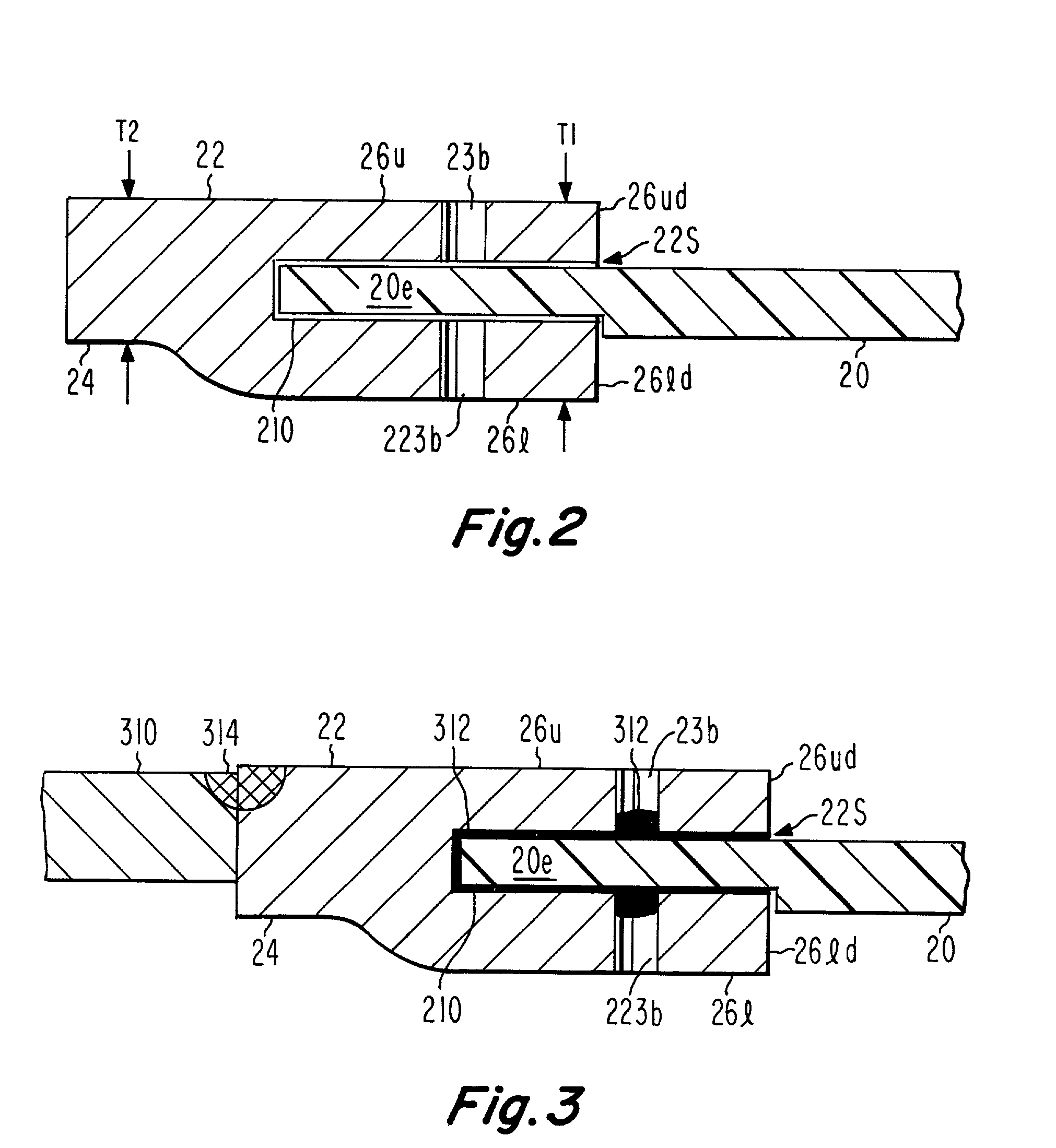Method for making large composite structures without use of an autoclave
a large-scale, composite material technology, applied in the direction of manufacturing tools, soldering devices, auxillary welding devices, etc., can solve the problems of differential stresses along the joint, the inability to welded composite materials including thermoset materials or reinforcements, and the complex bonding of composite materials to metallic materials or other composite materials
- Summary
- Abstract
- Description
- Claims
- Application Information
AI Technical Summary
Problems solved by technology
Method used
Image
Examples
Embodiment Construction
[0013] In FIG. 1, a first planar composite sheet 10 is associated with a first elongated metallic structure 12, and a second composite sheet 20 is associated with a second elongated metallic structure 22. Metallic structures 12 and 22 may be identical. As illustrated in FIG. 1 and in the cross-section of FIG. 2, metallic structure 12 is shaped, either by machining, casting or extrusion, as a bifurcated structure including a common heel or tang portion 14 and upper and lower tines or strip portions 16u and 16l, respectively. Those distal portions of the upper and lower tines which are most remote from the tang portion 14 are designated 16ud and 16ld, respectively. Upper and lower tine portions 16u and 16l run generally parallel, and define an elongated slot or notch 12S therebetween. The width W of the slot 12S is no less than the thickness w of the edge portion 10e of composite panel 10, and the depth D of slot 12 is at least slightly greater than the width d of edge portion 10e of ...
PUM
| Property | Measurement | Unit |
|---|---|---|
| thickness | aaaaa | aaaaa |
| metallic | aaaaa | aaaaa |
| metallic structure | aaaaa | aaaaa |
Abstract
Description
Claims
Application Information
 Login to View More
Login to View More - R&D
- Intellectual Property
- Life Sciences
- Materials
- Tech Scout
- Unparalleled Data Quality
- Higher Quality Content
- 60% Fewer Hallucinations
Browse by: Latest US Patents, China's latest patents, Technical Efficacy Thesaurus, Application Domain, Technology Topic, Popular Technical Reports.
© 2025 PatSnap. All rights reserved.Legal|Privacy policy|Modern Slavery Act Transparency Statement|Sitemap|About US| Contact US: help@patsnap.com



